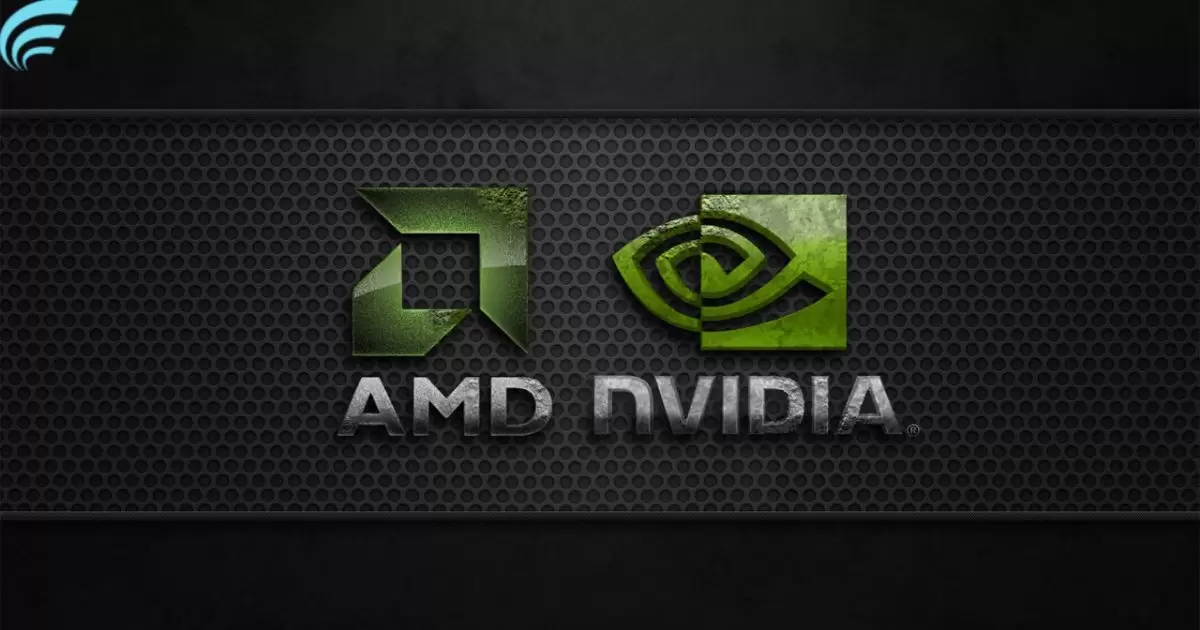Switching from Nvidia to an AMD GPU means changing the brain of your computer’s graphics to get better performance or save money. It’s like giving your computer a new superpower for handling videos and games. To do this, you pick the right AMD graphics card, follow some steps to replace the old one, and make sure everything runs smoothly. It’s like upgrading your computer’s creativity and speed.
Discover the game-changing secret to boosting your computer’s performance and saving money. Ever wondered how to switch from Nvidia to AMD GPU? Dive into a world of enhanced graphics and seamless gaming by unlocking the simple steps to make this powerful transformation. Don’t miss out on unleashing a new era for your computer today.
Switching from Nvidia to an AMD GPU is like giving your computer a performance makeover. It involves choosing a new graphics processor (GPU) from AMD, installing it, and optimizing settings for a smoother experience. This upgrade can enhance your gaming and video-editing adventures, offering a budget-friendly alternative with fantastic results. Make the switch and level up your computer’s graphics game.
The importance of Nvidia and AMD GPUs
Nvidia and AMD are two major players in the graphics processing unit (GPU) market. GPUs are crucial components in computers, responsible for rendering graphics and accelerating various tasks. Nvidia has long been a leader, known for its powerful and efficient GPUs, while AMD has gained recognition for providing competitive alternatives. Choosing between them often depends on individual needs, preferences, and budgets.
Both Nvidia and AMD GPUs play a vital role in enhancing overall system performance. Nvidia’s GPUs, like the GeForce series, are renowned for their exceptional gaming capabilities and support for advanced technologies like ray tracing. On the other hand, AMD’s Radeon GPUs offer compelling performance, often at a more budget-friendly price point. Understanding the strengths of each brand is essential for making an informed decision when considering a switch.
Reasons for Switching

There are various reasons why someone might contemplate switching from Nvidia to AMD GPUs. One primary factor is cost, as AMD often provides cost-effective alternatives without compromising performance. If you’re planning to explore specific AMD-exclusive features or have compatibility issues with your current Nvidia GPU, a switch might be beneficial. It’s crucial to identify your specific needs and assess how an AMD GPU can better meet them.
Preparing for the Switch
Before making the switch from Nvidia to AMD, thorough preparation is key. Begin by researching and selecting the AMD GPU that best suits your needs and budget. Ensure your power supply unit (PSU) can support the new GPU’s power requirements, as AMD GPUs may have different power consumption profiles compared to Nvidia. Back up important data to prevent any loss during the transition.
Consider uninstalling Nvidia drivers from your system to avoid conflicts with the new AMD GPU. This can typically be done through the Windows Control Panel or by using specialized driver uninstallation software. Familiarize yourself with the installation process for the chosen AMD GPU, and make sure your system meets the hardware requirements. Adequate preparation ensures a smoother transition and minimizes potential issues.
Installing the AMD GPU
Installing an AMD GPU involves a straightforward process. Begin by shutting down your computer and disconnecting the power supply. Remove the existing Nvidia GPU from the PCIe slot on your motherboard. Insert the AMD GPU into the vacant slot, ensuring it is securely seated. Connect the necessary power cables to the GPU, considering the specific requirements outlined in the GPU’s documentation.
Once the hardware is in place, power on your computer and install the latest AMD graphics drivers. These can be downloaded from the official AMD website. Follow the on-screen instructions to complete the installation. Reboot your system to apply the changes. It’s crucial to uninstall any remaining Nvidia drivers to prevent conflicts. After successful installation, your system should recognize the new AMD GPU.
Configuring the System
Configuring your system after installing the AMD GPU involves optimizing settings for optimal performance. Access the AMD Radeon Software, a user-friendly interface that allows you to customize various graphics and gaming settings. Adjust display settings, resolution, and refresh rates to match your preferences. Explore additional features, such as Radeon Anti-Lag and Radeon Image Sharpening, to enhance your gaming experience.
Ensure that your operating system is up to date and compatible with the new GPU. Check for firmware updates for your motherboard and other hardware components. Fine-tune in-game settings for optimal performance and compatibility with the AMD GPU. Configuring the system to align with your preferences and requirements maximizes the benefits of the switch and enhances overall computing performance.
Benchmarking and Testing
After configuring the system, it’s essential to benchmark and test the new AMD GPU’s performance. Run synthetic benchmarks and real-world tests to evaluate frame rates, temperature levels, and overall stability. Compare the results with previous benchmarks from your Nvidia GPU to assess the performance improvement or any potential trade-offs. This step ensures that the switch delivers the desired outcomes and meets your expectations.
Consider testing a variety of applications and games to ensure compatibility and optimal performance across different scenarios. Monitoring temperatures during extended gaming or graphics-intensive tasks is crucial to prevent overheating. Benchmarking provides valuable insights into the capabilities of your new AMD GPU and helps you make informed decisions regarding its usage and potential adjustments.
User Experiences
Gathering insights from other users who have made a similar switch can provide valuable perspectives. Online forums, community discussions, and user reviews can offer firsthand experiences and troubleshooting tips. Learning from the experiences of others can enhance your understanding of potential challenges and solutions, ensuring a smoother transition to the new AMD GPU.
Pay attention to user feedback on specific AMD GPU models, driver stability, and customer support, especially if you encounter issues like how to fix d3d11 compatible GPU. This information can guide you in making informed decisions regarding your choice of GPU and potential software optimizations. Engaging with the user community can be a valuable resource for resolving any compatibility issues that may arise during or after the switch.
Future Considerations

As technology continues to evolve, considering future developments is crucial when making the switch from Nvidia to AMD. Stay informed about upcoming GPU releases, software updates, and advancements in graphics technology. Evaluate the long-term support and compatibility of your chosen AMD GPU to ensure it meets your future computing needs.
Keep an eye on emerging trends in gaming and content creation that may influence GPU requirements. Regularly update drivers and firmware to benefit from performance optimizations and compatibility improvements. By staying proactive and informed, you can future-proof your system and ensure that your switch to an AMD GPU remains a worthwhile investment in the evolving landscape of graphics technology.
FAQs
Is it cost-effective to switch from Nvidia to AMD GPU?
Switching to an AMD GPU can be cost-effective, as AMD often provides competitive performance at a more budget-friendly price compared to Nvidia.
What considerations are crucial before making the switch?
Before switching, research and select an AMD GPU that aligns with your needs, ensure your power supply supports it, and back up important data.
How do I uninstall Nvidia drivers before installing an AMD GPU?
Uninstall Nvidia drivers through the Windows Control Panel or specialized software to prevent conflicts with the new AMD GPU.
What steps are involved in installing an AMD GPU?
Install the AMD GPU by shutting down, removing the existing GPU, securely seating the AMD GPU, connecting power cables, and installing the latest AMD graphics drivers.
How can I optimize my performance after switching to an AMD GPU?
Configure the system by accessing the AMD Radeon Software to customize graphics settings, update the operating system, and fine-tune in-game settings for optimal performance.
Conclusion
As we conclude the journey on how to switch from Nvidia to AMD GPU, envision it as a makeover for your computer’s visual prowess, aligning it precisely with your preferences. Unraveling the significance of Nvidia and AMD GPUs empowers decision-making, considering aspects like cost, preparation, and the crucial installation phase. This transition involves bidding farewell to one graphics giant and ushering in a new, potentially more compatible companion.
Guiding through the configuration and optimization steps resembles crafting a personalized digital canvas, ensuring a smooth and enhanced computing experience. User experiences and community insights act as invaluable beacons, demystifying the path of the GPU transition.
In the realm of how to switch from Nvidia to AMD GPUs, the journey intertwines cost-effectiveness, precise preparation, and community wisdom, ultimately leading to a graphics upgrade finely tuned to your preferences and computing needs.











